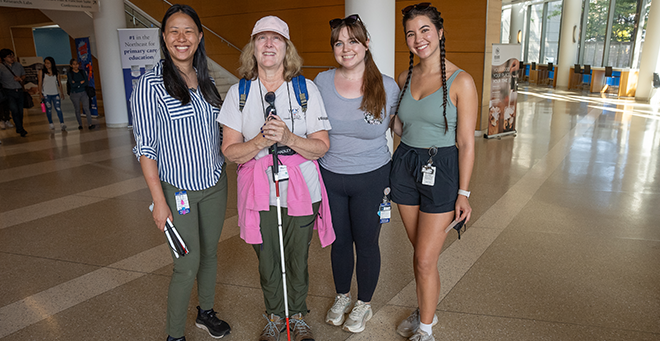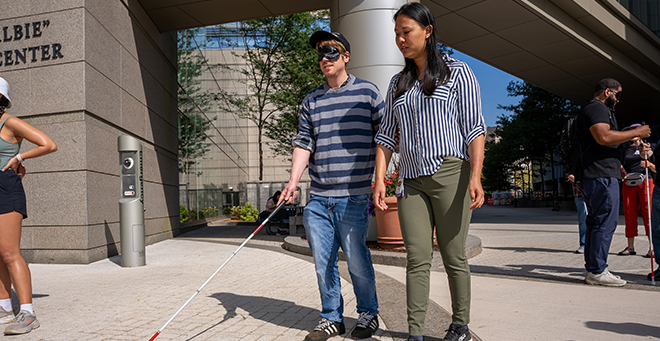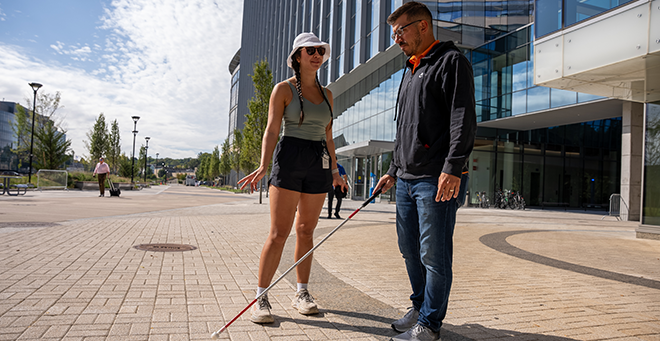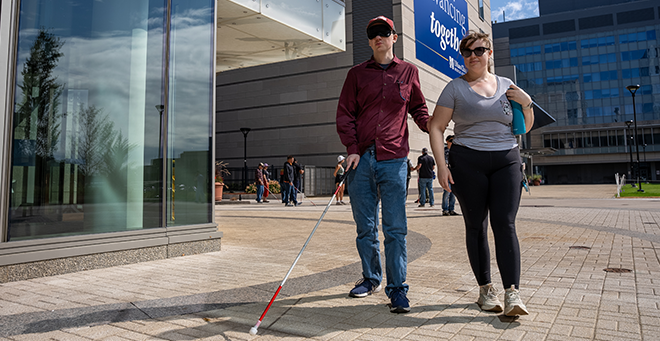
Medical students in a population and community health clerkship at UMass Chan Medical School recently helped guide a group of blindfolded engineers around campus to highlight the importance of nonvisual cues in infrastructure design.
Engineers from the Massachusetts Department of Transportation were equipped with white canes to experience what it’s like to be visually impaired.
Joined by volunteers from WalkFit, a walking group for visually impaired individuals in Worcester, T.H. Chan School of Medicine students Victoria Xiao, Brooke Honzel and Ilana Silverstein helped guide the MassDOT team members from the Albert Sherman Center to the campus quad, then to the nearby MassDOT District 3 headquarters off Plantation Street.

The program included surveying traffic hazards, timing stoplights and assessing crosswalks.
“We are learning about accessibility features and how the areas surrounding UMass Chan and its nearby neighborhoods may not be super accessible for visually impaired persons,” Honzel said.
See it My Way, a two-week continuous learning experience exposing medical students to the challenges faced by visually impaired individuals is part of a clerkship Honzel, Xiao and Silverstein are participating in.

“The really beautiful thing about this program is that we get to work with a wide range of people. We have worked with volunteers from the community, medical students, nursing students and campus leadership. We get to hear from a diverse spectrum of people about what the experience is like and also how we can better improve life for people with visual impairments,” Xiao, the program’s student leader, said.
The See it My Way program and the WalkFit group are led by Liz Myska, a local attorney who has managed the guided program since 2020.
Myska said the lack of nonvisual cues in infrastructure like roads and sidewalks makes it difficult for visually impaired individuals to participate fully. She said the program aims to foster awareness and understanding through direct interaction and hopes it will educate engineers and other professionals about the need for inclusive design.

“Students will learn that visually impaired individuals are just like everyone else, with the only difference being their eyesight,” Myska said. “It’s set up to teach students and anyone that participates that visually impaired people have beating hearts and a desire to belong.”
A White Cane Awareness Day program, an annual observance to raise awareness about the importance of the white cane as a symbol of independence for individuals who are blind or visually impaired, is being held at UMass Chan on Oct. 15.


